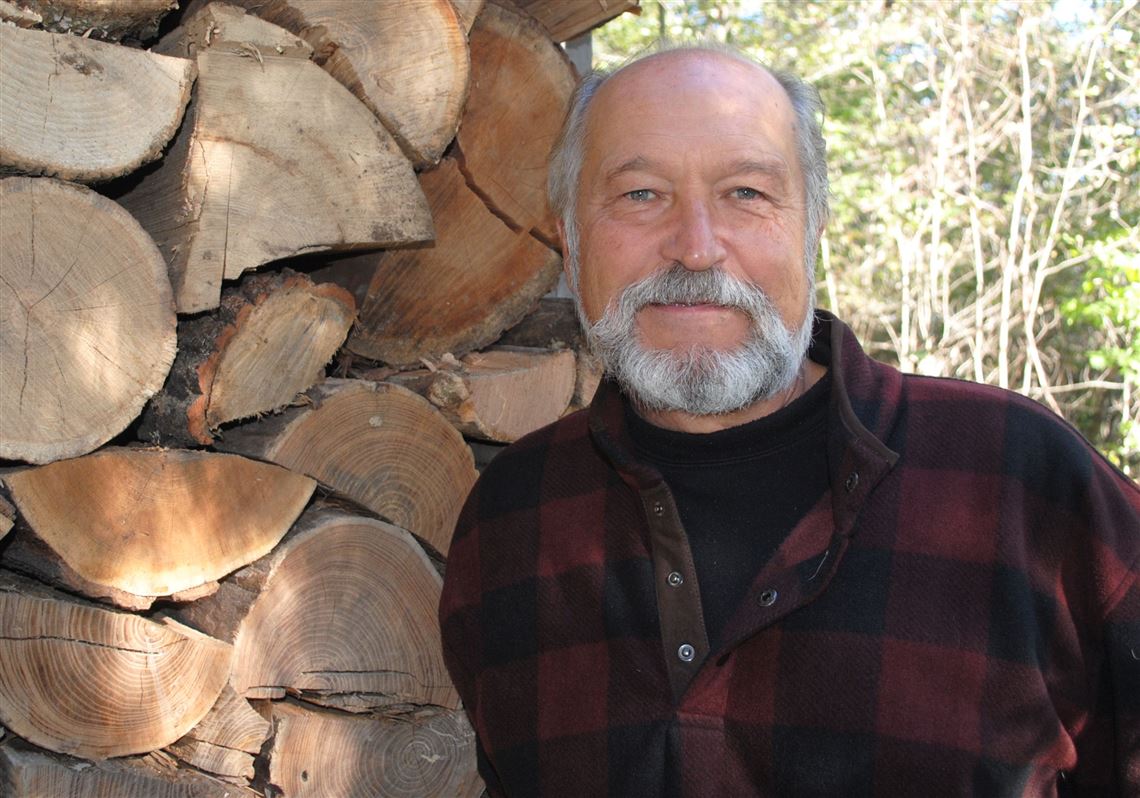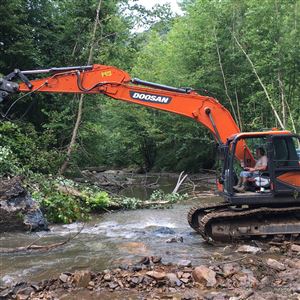At the base of a small punchbowl waterfall, a small pool wraps around the edge of a rounded flat-top boulder as it leans into Dunbar Creek in Fayette County. When I was 12, my dad would leave me there with a box of flies and a pocket full of butterscotch candies while he started fishing farther upstream.
I won’t give away the location, but with the flip of a woolly bugger to a precise spot at the base of the falls, the current sweeps the fly down into the dark recesses under the rock where the pool’s biggest trout gather. Just thinking about my boulder conjures the babbling of the falling water, the rich, creamy taste of butterscotch and the sensation that my dad is roll casting just up around the bend. It’s an ambiguous spot on a boulder-strewn stream, probably meaning nothing to anyone, but for 50 years it has remained my favorite place on the planet.
I was delighted to find a similar personal connection to the region in the pages of “Smoke to See By” (Catamount Press, $19.95), a collection of 21 essays and stories by outdoor sports, nature and conservation writer Ben Moyer. President of Trout Unlimited’s Chestnut Ridge Chapter, Moyer’s award-winning articles and columns have appeared in national and regional publications including Pittsburgh Quarterly and the Pittsburgh Post-Gazette. Some of the book’s chapters are new. Some are republished with permission.
With family roots sunk deep into the western slopes of the Appalachian Mountains, miles north of the Mason-Dixon Line, Moyer sees the region’s natural history and human history as blended colors on an ecological palette that continues to shade and shape the region. Smartly written by a natural storyteller, “Smoke to See By” is a biography of a place that will hold equal value for autumn leaf-peepers on the National Road, pedalers on the Great Allegheny Passage, Dunbar Creek fly anglers and hunters on the hills 50 miles southeast of Pittsburgh.
Chapter one begins with an explanation of why the Commonwealth’s corner could be considered anything but “spectacular,” followed by 150 pages describing natural regional relevance and cultural nuance that are too easily and too often overlooked.
“I believe it’s a place that is underappreciated broadly, but it’s coming into its own,” said Moyer. “Dunbar in particular had a big influence on my life and how I look at nature. It’s where I learned to fish with my dad and uncle and why I’m a fly fisherman today.
“ It was treated badly by industry, but is recovering from past abuse. [Part of it] was recently designated Exceptional Value Waters by the state Department of Environmental Protection.”
History is almost as interesting to Moyer as nature, he said, and the region’s history is unique. In the book, he explains that Dunbar Creek was named for an 18th century British quartermaster in Gen. Edwin Braddock’s army. Col. Thomas Dunbar was ordered to bivouac at the creek with cannons, soldiers and supplies while Braddock, his aide-de-camp George Washington and an advance guard raced ahead hoping to chase the French from Fort Duquesne. The crippled army limped back to the creek in a panic, carting mortally wounded Braddock after the force was routed by French-aligned Indians east of the fort near present day Kennywood.
The genetic lineage of the native brook trout that live in Dunbar Creek and its tributaries can be traced to fish that scattered when the British splashed through in 1755.
“Those brook trout are indigenous to this place. They belong here,” said Moyer. “When we see those native fish, their presence says that at least in the watershed, things are intact and operational.”
Moyer’s appreciation of the corner counties goes beyond their value for only outdoor sport and historical relevance. The rough hewn topography has worked its way into the regional dialect.
“Even our way of speaking about an event that happened near a particular stream is telling,” he wrote. “We tend to say the incident happened ‘on’ Tenmile Creek or ‘on’ Laurel Run, as if someone walked atop the liquid surface, suggesting an intimacy with streams that is regionally unique.”
“Smoke to See By” is available at Riverstone Books, Sunbury Press and Amazon.com.
Ben Moyer and P.J. Piccirillo, whose fiction novels are set in southwest and northern Pennsylvania, will share a book signing event that starts at 7 p.m. Thursday at Riverstone Books, 5841 Forbes Ave., Oakland, 412-422-2220.
John Hayes: jhayes@post-gazette.com.
First Published: October 4, 2023, 7:33 p.m.


















